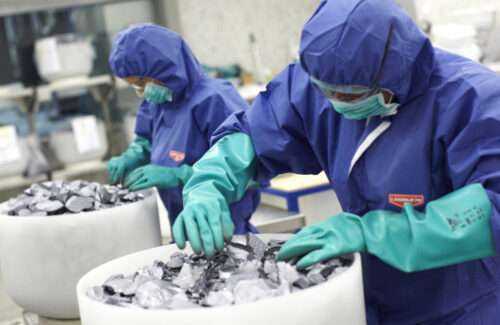After facing a shortage during the last two years, the global polysilicon market will enter an oversupply situation in 2024, according to information from Bernreuter Research and the “Polysilicon Market Outlook 2027” report released today.

Credit: NorSun
Chinese polysilicon market leader Tongwei will usher in a phase of fierce competition in 2024.
“Tongwei is planning to bring 575,000 tons of new production capacity on stream next year, whereas we expect a market growth of 200,000 tons at most,” says Johannes Bernreuter, head of Bernreuter Research and author of the report.
The polysilicon shortage in 2021 and 2022, which drove the spot price up to almost $40/kg, has lured many Chinese aspirants into the industry. The new report from Bernreuter Research screens 36 companies; among them, 14 have started to construct or already have ramped up a new polysilicon plant. Besides Tongwei, however, other leading manufacturers have also expanded production.
“If all new capacities were ramped up in 2024, oversupply would swell to 1.4 million tons,” says Bernreuter. “With its low manufacturing costs and proven product quality, Tongwei will push most, if not all, new entrants out of the market.”
The Top 10 polysilicon manufacturers according to actual output in 2022 were:
- Tongwei (China)
- GCL (China)
- Daqo New Energy (China)
- Xinte Energy (China)
- Wacker Chemie (Germany/United States)
- Asia Silicon (China)
- Xinjiang East Hope (China)
- OCI (South Korea/Malaysia)
- Hemlock (United States)
- TianREC (China)
Bernreuter Research expects this shakeout will eliminate a capacity of up to 2,400,000 metric tons (MT), compared to 275,000 MT during the second wave shakeout – from 2018 through 2020 – and 135,000 MT during the first – between late 2010 and early 2013. For 2024, Bernreuter expects the polysilicon price to undercut the all-time low of $6.75/kg reached in June 2020.
While China’s share in the global polysilicon output will further increase to 90% in 2023 (to even 92.5% in solar-grade material), the non-Chinese manufacturers Wacker, OCI, Hemlock Semiconductor and REC Silicon should remain mostly exempt from the shakeout. The reason for that is the Uyghur Forced Labor Prevention Act in the United States, which bans products from the Xinjiang Uyghur Autonomous Region in northwestern China. The legislation has created a separate, higher-price market for non-Chinese polysilicon manufacturers, which do not use silicon metal from Xinjiang as feedstock.
Just last week, REC Group (separate from REC Silicon) ceased operations at its Norwegian polysilicon factory, citing the high price of electricity in Norway and the overproduction of polysilicon worldwide, making its operations unable to compete with the Chinese makers. The small-scale operation is one of the first to fall.
REC Silicon is expected to restart its poly plant in Moses Lake, Washington, this month, marking one of the first non-China polysilicon facilities to start production in recent years.
The shakeout in China is coming even though the polysilicon industry’s largest customer, the solar sector, is growing rapidly. In contrast to other market researchers, Bernreuter assumes that annual PV installations will rise from 425 GW in 2023 to 1,100 GW in 2027, which is equivalent to an average annual growth rate of 26.8%.
“Traditional forecast models have mostly underestimated PV growth. Therefore, we have adopted a more aggressive approach,” explains the analysis.
The rapid growth will fuel strong demand for silicon metal, which is made of quartz (SiO2).
“The consequence is inevitable: Quartz for silicon metal will run short in the second half of this decade,” predicts Bernreuter.



